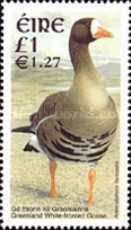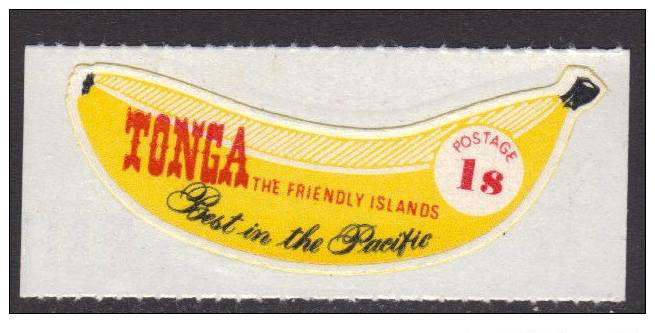Dizajn poštanskih maraka
Dizajn poštanskih maraka
Dizajn poštanske marke vrlo je važan aspekt u proizvodnji maraka. Odnosi se na radnju grafičkog dizajna (upotreba logotipa, slika, oblika, boja i teksta) učinjenu na poštanskim markama. Nakon izdavanja prve marke u svijetu, Penny Black (crna marka od 1 penija koja je prikazivala glavu kraljice Viktorije), nekoliko tisuća dizajna poštanskih maraka proizvedeno je i pušteno za upotrebu u pošti, kao i za kolekcionarske svrhe. Kliknite ovdje da vidite Penny Black.
Dizajn poštanske marke sastoji se od mnogo elemenata koji su potrebni kako bi zadovoljio određene kriterije i zadovoljavajuće ispunio svoju funkciju. Najbitniji dio dizajna poštanske marke je njezina nominala koja pokazuje njezinu stvarnu novčanu vrijednost. Što se tiče dizajna poštanskih maraka u drugim zemljama, one se moraju pridržavati međunarodnih sporazuma i politika; stoga se ime njihove zemlje mora pojavljivati na gotovo svakoj vrsti marke koje izdaju.
Dizajn poštanske marke obično se smatra gotovo univerzalnim, a kupci poštanskih maraka u osnovi pretpostavljaju da marke nose dizajn.
Važni elementi uzeti u obzir pri dizajnu poštanske marke
There are 6 elements or parts that are very important in a postage stamp design:
1) Apoen
A lot of people will agree that the main role of a stamp is to show the amount or denomination of the pre-payment of postage. Due to the fact that various sizes and types of letters/mail naturally pay varied sums of postage, the postage stamps are required to have a specific value or denomination.
The typical appearance of the value or denomination is simply a number, and it can be accompanied by a symbol of the currency which is placed either before or after it. Several postage stamps made in the early times show the denomination in words; however, the Universal Postal Union (UPU; special agency of the United Nations that coordinates postal policies worldwide) required that postage stamps used for international mail must utilize Arabic numerals (0, 1, 2, 3 and so on). This made any stamp's denomination easily identifiable, especially for people residing in foreign countries.
The postage stamp design of semipostal stamps typically shows 2 values or denominations, with a plus (+) sign in between them. The first denomination stands for the actual amount, and the second one stands for the extra amount that would be given to charity.
In some cases, you will encounter a particular country's stamp issues having a dual currency on its postage stamp design. An example would be the Ireland bird stamps issued on June 11, 2001, in which you will see the postage stamps in dual currency (Irish pound and Euro).
2) Country Name
The second most important element of the postage stamp design is the country's name. This part of the postage stamp design is usually for stamps that are intended for international use.
The first ever postage stamps issued in the UK or United Kingdom bear no name of its country. In the year 1874, the UPU had exempted Great Britain regarding the rule in postage stamp design which declared that the name of the country must be written on their stamps. The visage of the king or queen was enough identification for Britain's postage stamps. Up until now, the United Kingdom is the one and only country that has no need to put its country name on its postage stamps. Kliknite ovdje za pregled kataloga maraka Velike Britanije. Što se tiče ostalih zemalja SPU-a, naziv njihove države mora biti napisan latiničnim pismom (a, b, c itd.).
Odabrani naziv obično je naziv države, a budući da su marke relativno male, neke zemlje koriste kraće i jednostavnije oblike ili čak kratice kako bi se lijepo uklopile i izgledale na dizajnu poštanske marke. Na primjer, marke Južne Afrike imaju natpis "RSA". Kliknite ovdje za pregled poštanskih maraka Južne Afrike

Postoje neke zemlje koje imaju ranije nazive kao što je Burkina Faso. Burkina Faso je prije bila poznata kao Gornja Volta (na francuskom, to je Haute-Volta) jer se zemlja sastoji od gornjeg dijela rijeke Volte. Ime je promijenjeno 1984. Burkina Faso doslovno znači "Zemlja čestitih ljudi". Kliknite ovdje za pregled poštanskih maraka Burkine Faso. Kliknite ovdje za pregled poštanskih maraka Gornje Volte
Postoje neke zemlje u kojima je dopušteno imati više oblika, od kojih dizajner poštanske marke može odabrati onaj koji smatra najprikladnijim. Naziv se može pojaviti u obliku pridjeva, kao u Posta Romana (Rumunjska pošta) za Rumunjsku. Kliknite ovdje za pregled poštanskih maraka Rumunjske
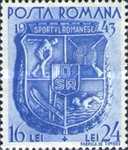
Neki ovisni teritoriji mogu ali ne moraju sadržavati ime svoje matične zemlje.
3) Tekstualni elementi
Gotovo sve poštanske marke imaju tekst u svom dizajnu. Nakon postavljanja denominacije i naziva države, tekstualni elementi mogu sadržavati jednostavnu, ali funkcionalnu svrhu (primjeri su: "službena pošta", "zračna pošta", "poštarina" itd.), ime istaknute osobe, broj tablice (serijski broj tiskarske ploče; broj otisnut na margini tabaka), godina izdanja marke, događaj koji se obilježava, pa čak i nacionalni moto.
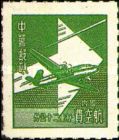
Ponekad dizajn poštanske marke koristi tekst kao glavni element dizajna. Na primjer, neke pakistanske marke koriste tekst kao glavni dizajn poštanske marke na svojim markama. Međutim, općenito se u mnogim zemljama tekst kao glavni element dizajna rijetko koristi u posljednjih nekoliko godina. Kliknite ovdje da vidite marke Pakistana.
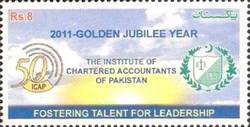
As for countries that have multiple scripts and multiple languages, they may have to write these in many ways. For instance, stamps of Iraq have texts written in both Arabic and Latin characters. Kliknite ovdje za pregled poštanskih maraka Iraka
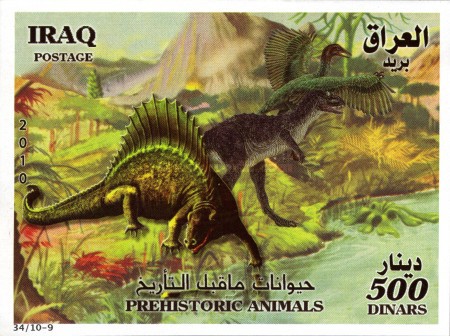
You may see some stamps that also have written inscriptions found outside the margin. Most of them are constantly at the lower or bottom part, and it usually bears the designer and/or the name of the printer. Sometimes, a written description or narrative of the postage stamp design is located in the margin. In the past few years, the lower leftmost margin has turned into the most-preferred place to put in the year when the stamps were issued. Philatelists note these changes in the marginal inscriptions and regard them as distinctive kinds of stamps.
4) Grafički dizajn
The graphic element of a postage stamp design can be one of four major categories:
A. Portrait bust -- can be the full face or a profile.
B. Emblem -- flag, coat of arms, posthorn, national symbol, etc.
C. Numerički - dizajn poštanske marke koji je kreiran oko broja nominalne vrijednosti.
D. Pictorial -- any image that ranges from animals and plants, to landscapes, to historical figures, to original artwork. Images may also be abstract designs, allegories or represent real-world objects.
Different countries have different special rules that dictate the selection of the postage stamp design or design elements. For instance, stamps of the United Kingdom must show the monarch (usually as a silhouette), whereas stamps of the United States must not show any person who has been deceased for less than 10 years, with the only exception for former Presidents, who may be shown on a stamp 1 year after they died.
5) Oblik i veličina
The most common postage stamp's shape is a rectangle, because this is the most practical way to put stamps in a stamp sheet. A certain rectangle taller than wide is a vertical design, whereas wider than tall is called a horizontal design.
Aside from rectangular stamps, you will also encounter other shapes of stamps such as triangles, octagons, circles, rhombuses, and other freestyle shapes including hearts and a stamp shaped like a banana which was issued from 1969-1985 in Tonga.

The most common size of a postage stamp is about 10 mm to 30 mm (millimeters), as these dimensions have proven to be the best and easiest size to handle.
Najveća poštanska marka u povijesti izdana je u Sjedinjenim Državama od 1865. godine. Veličina joj je 52 mm x 95 mm. Ove su marke korištene isključivo za slanje novina.
Najmanja poštanska marka ikad zabilježena izdana je u Mecklenburg-Schwerinu, teritoriju u sjevernoj Njemačkoj.
Proces izrade dizajna poštanske marke
Nakon odabira teme, poštanska uprava obično angažira umjetnika da osmisli dizajn poštanske marke.
U izradi dizajna poštanske marke, umjetnik marke mora slijediti sva pravila i ograničenja kao što je prethodno navedeno. Od umjetnika se također može zahtijevati da ima dovoljno vjerodajnica u vezi s dizajnom poštanskih maraka. Nadalje, umjetnik mora razmotriti scenarij rada s prilično malenim platnom. Na primjer, složene klasične slike često postaju nejasne i zamagljene kada se smanje u veličini; stoga će umjetnik marke odabrati zanimljiv ili osebujan detalj ili aspekt kao središnju točku dizajna poštanske marke. Isto tako, marka koja prikazuje portret obično ne znači mnogo mnogim kupcima, a umjetnik marki može odlučiti umetnuti tekstualni element koji implicira postignuća osobe. Primjer bi bila arhitektova poznata zgrada ili će umjetnik jednostavno napisati riječ "arhitekt" negdje u dizajnu poštanske marke.
Nakon toga, umjetnik će dostaviti jedan ili dva (ili više) dizajna maraka, a poštanska uprava će ga pregledati radi odobrenja. Nakon odobrenja, dizajn poštanske marke može proći kroz mnoge faze modifikacija prije nego što uđe u proces proizvodnje marke. Dizajn poštanske marke također može biti odbačen, možda ako se situacija promijeni, na primjer dođe do promjene vlade.

